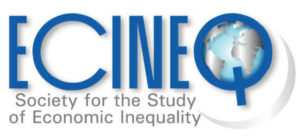Inequality Bands: Seventy-five years of measuring income inequality in Latin America
Working Paper 2024-672
Abstract
Drawing on a comprehensive compilation of quantile shares and inequality measuresfor 34 countries, including over 5,600 estimated Gini coefficients, we review the measurement ofincome inequality in Latin America and the Caribbean over the last seven decades. We find thatthere is quite a bit of uncertainty regarding inequality levels for the same country/yearcombinations. Differences in inequality levels estimated from household surveys alone are presentbut they derive from differences in the construction of the welfare indicator, the unit of analysis,or the treatment of the data. With harmonized household surveys, the discrepancies are quite small.The range, however, expands significantly when –to correct for undercoverage and underreportingespecially at the top of the distribution– inequality estimates come from some combination ofsurveys and administrative tax data. The range increases even further when survey-based incomeaggregates are scaled to achieve consistency not only with tax registries but with NationalAccounts. Since no single method to correct for underreporting at the top is fully convincing atpresent, we are left with (often wide) ranges, or bands, of inequality as our best summaries ofinequality levels. Reassuringly, however, the dynamic patterns are generally robust across thebands. Although the evidence roughly until the 1970s is too fragmentary and difficult to compare,clearer patterns emerge for the last fifty years. The main feature is a broad inverted U curve, withinequality rising in most countries prior to and often during the 1990s, and falling during the early21st century, at least until around 2015, when trends appear to diverge across countries. Thispattern is broadly robust but features considerable variation in timing and magnitude dependingon the country.
Authors: Facundo Alvaredo, François Bourguignon, Francisco Ferreira, Nora Lustig.
